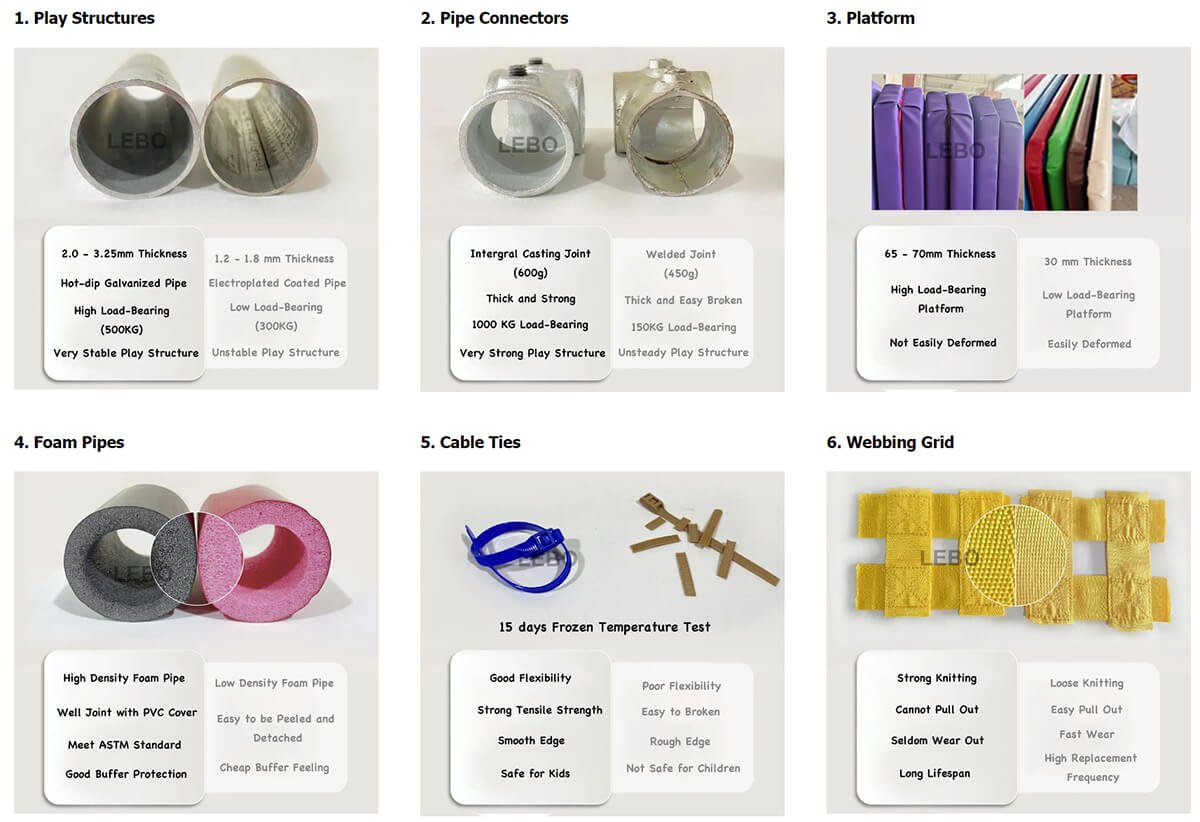Indoor play spaces have exploded in popularity around the world in recent years, transforming from a niche business into a thriving family entertainment category. As the industry has grown, the need for strong safety measures has become more critical. Parents and operators want to know that kids can run and play without putting themselves in danger. Over the years, safety standards in the industry have changed dramatically, as materials, technology, and regulations have all improved. In this article, we’re going to talk about how those standards have evolved and why they’re so important to keeping kids safe and making your indoor playground business successful.
Safety standards in indoor playgrounds have evolved with enhanced materials, rigorous design guidelines, regular inspections, staff training, and adherence to updated regulations like ASTM and CPSC. Focus has shifted towards preventing injuries and ensuring safe, clean environments.
Historical Background of Indoor Playground Safety
In the early days of indoor playgrounds, there were no safety standards. The play spaces were built with whatever materials they had. They weren’t designed with the unique physical and developmental needs of little kids in mind. A lot of the people who started these businesses struggled to make their places safe because there were no rules or regulations to follow.
One notable incident occurred in the 1990s when an indoor space in the US got sued after a kid got hurt on some poorly designed equipment. That case, along with others, helped push the need for better safety. As indoor playgrounds started to become more popular, industry stakeholders started to push for rules to make them safer, ultimately leading to the development of today’s recognized safety standards.
Introduction of Standards & Guidelines (1990s)
By the 1990s, the focus on preventing injuries got even bigger, which led to more changes in safety standards. The American Society for Testing and Materials (ASTM) introduced standards that emphasized equipment strength and durability, along with regular safety audits to make sure operators followed the rules. This era marked a shift to a more structured approach to playground safety, incorporating ongoing research findings into established guidelines.
These standards addressed:
- Drop Height: Set a limit on the maximum drop height and require a soft surface to absorb the impact (such as rubber pads and foam pads).
- Entrapment Hazards: Ensure gaps between equipment are not large enough to allow a child’s limbs or head to be trapped.
- Material Requirements: Use non-toxic, flame-retardant, and durable materials to prevent hazards such as injury and fire.
Modern Safety Standards
Today, indoor playgrounds have to meet different international safety standards, including ASTM F1918-12 and EN 1176. These standards make sure equipment has been thoroughly tested for safety features like impact-absorbing surfaces, which are crucial in reducing injuries from falls. In addition, following fire safety rules and using materials that aren’t toxic are now just part of playground design.
Key Safety Standards in the Industry
To keep up with the growing need for safety, a few big safety standards were created. They make sure playground equipment is designed and built with safety as the number one consideration. The most important standards are:
ASTM (American Society for Testing and Materials): Ensures equipment safety through rigorous testing and guidelines, particularly important in North America.
TUV (Technischer Überwachungsverein): A German organization focused on equipment safety and quality, with a strong presence in Europe and globally.
EN71 and EN1176: European standards that specifically address the safety of toys and playground equipment, ensuring that materials are non-toxic, durable, and safe for use by children.
CE Certification: Indicates conformity with health, safety, and environmental protection standards in Europe.
Following these certifications not only keeps accidents from happening but also builds trust between businesses and the families who use them. It lets parents know their kids are playing in a safe place.
Evolutions in Material Safety
The conversation around what indoor playgrounds should be made of has changed a lot. Early playgrounds were made of basic plastics and metals. These materials often had problems, such as sharp edges or toxic components – stuff that wasn’t good for the modern, safety-conscious consumer. Today, indoor playground manufacturers like Lebo Play use fire-resistant materials for our North American clients and eco-friendly materials for our other regions.
These material innovations serve a dual purpose by enhancing both safety and environmental sustainability. Fire-resistant materials reduce the risk of accidents in case of fire emergencies, and eco-friendly materials contribute to a healthier environment for kids. By meeting strict safety standards, we make sure our materials meet regulations in North America, Europe, and other markets, giving venue operators peace of mind.

Technological Integration and Accessibility (2010s)
As technology has advanced, standards have changed to include considerations for interactive and digital play elements. This includes properly installing and maintaining interactive panels, screens, and sensors in play areas.

In addition, indoor playgrounds became more inclusive, with standards including accessibility guidelines for kids with disabilities. The rules required equipment designs to be usable by kids with limited mobility, cognitive disabilities, and other challenges.

Conclusion
The evolution of safety standards in the indoor playground industry shows how important it is to keep adapting and getting better. From the days of minimal regulations to today’s strict safety requirements, you have to put your customers’ safety first if you want to succeed in this competitive market. By working with trusted suppliers like Lebo Play, you can make sure your playgrounds meet the highest safety standards while providing fun, engaging experiences for kids.
If you are considering opening or upgrading an indoor playground, safety should be your top priority. At Lebo Play, we are dedicated to providing customized, compliant, and high-quality playground solutions tailored to your specific needs. Let’s work together to create safer, happier play environments for children everywhere.

